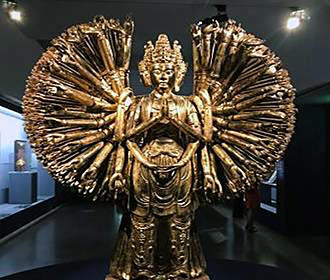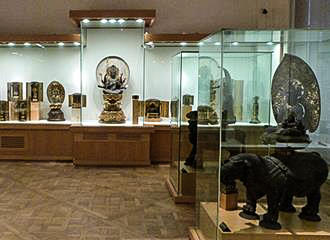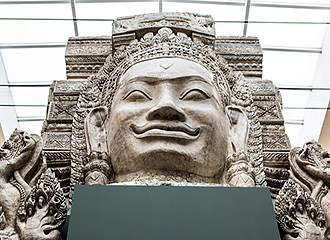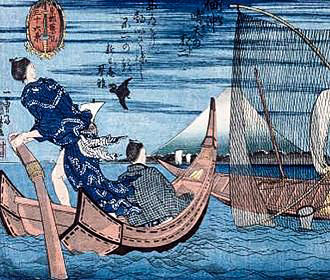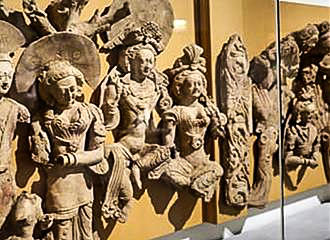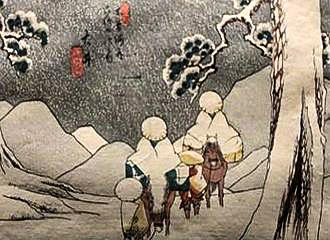Paris Panthéon Bouddhique, Galeries du Panthéon Bouddhique
The Paris Panthéon Bouddhique, or Galeries du Panthéon Bouddhique had a unique collection in Europe, which was originally compiled by Emile Guimet who founded the Musee Guimet, and dedicated to revered figures that appear in temples, it was a fascinating Paris museum to visit, which is now incorporated into the Musee des Arts Asiatique Guimet, and the Hotel Heidelbach now houses a different museum.
About Paris Panthéon Bouddhique, Galeries du Panthéon Bouddhique
The Paris Panthéon Bouddhique had a full name of Les Galeries du Pantheon Bouddhique and being an addition to the Musee Guimet, or Musee des Arts Asiatique Guimet as it is also called, it was located just up the road from the latter within the Hotel Heidelbach.
The former mansion belonged to Alfred Heidelbach, who was a banker and president of the Chamber of Commerce for the United States in Paris, and he had the mansion designed and constructed by the architect Rene Sergent back in 1913.
In a neoclassical architectural style, the Hotel Heidelbach mansion was eventually acquired by the Ministry of Education in 1955 and then it was completely renovated in 1991 in order to house the Paris Panthéon Bouddhique, or Galeries du Panthéon Bouddhique.
It was under the leadership and authority of the late Professor Bernard Frank, that the Paris Panthéon Bouddhique, Galeries du Panthéon Bouddhique, was inaugurated to its full potential from the original collection put together by Emile Guimet.
So when you look back at the history of the Musee Guimet, Emile Guimet was its founder after he had accumulated numerous works of art and artefacts from his extensive travels in Asia.
In fact, there is a complete set of around 250 Japanese works that Emile Guimet compiled during a trip to the islands back in 1876, which represents a unique collection within Europe, and this has been further enhanced over the years such as with Chinese works, but this was re-integrated back into the Musee des Arts Asiatique in 2015.
Now the Paris Panthéon Bouddhique, or Galeries du Panthéon Bouddhique, was a museum in Paris that provided a fascinating presentation of revered figures like the holy images of Buddha's and divine entities that are to be seen in temples all over these countries, but is, as we have said, now again part of the Musee Guimet.
Yet to make this Paris museum even more complete, on the 10th anniversary of the opening of the Paris Panthéon Bouddhique, a Japanese garden called the Jardin Japonais was designed and opened, along with an authentic Tea Pavilion, known as the Pavillon de The.
In fact, because this tea pavilion hosts a legendary Japanese tea ceremony, it has become one of the popular Paris tourist attractions, and it is an ideal place to discover more about their culture on top of the Musee Guimet and the new museum at the Hotel Heidelbach that has replaced the Paris Panthéon Bouddhique, which is now based purely on tea and furniture, etc that encompasses this tradition.
Visiting the Paris Panthéon Bouddhique, Galeries du Panthéon Bouddhique
The Paris Panthéon Bouddhique, Galeries du Panthéon Bouddhique, were open every day of the week except for a Tuesday and national French holidays from 10am through to 5:30pm, yet last entry was one hour before closing time.
Now the galleries holding the permanent exhibition, as we mentioned earlier, are now a part of the Musee des Arts Asiatique Guimet, however the Japanese Garden called the Jardin Japonais in French where the Tea Pavilion is located are normally free to enter.
There is a charge during temporary exhibitions and for the museum relating to tea and furniture within the Hotel Heidelbach that re-opened in 2017, but this is not always open and is closed during certain days or at certain times and unfortunately neither of these are accessible to the disabled at present.
You will find that the former Paris Panthéon Bouddhique, Galeries du Panthéon Bouddhique within the Hotel Heidelbach is located in the 16th Arrondissement of Paris just up the road from the Musee Guimet and close to numerous Paris tourist attractions such as the Place des Etats-Unis where you can find an American style Paris garden with a statue of Thomas Jefferson, and the famous Jardins du Trocadero gardens, which are part of the Palais de Chaillot.
Then you have the River Seine, and on the opposite bank the Musee Quai Branly, but going along a bit further and you will get to the most famous Paris monument, which is of course the Eiffel Tower along with another garden area called the Champ de Mars.
Access to the Paris Panthéon Bouddhique, Galeries du Panthéon Bouddhique
But getting back to this museum, as we mentioned earlier this is now located at the Musee Guimet, yet getting to the Hotel Heidelbach and its Japanese Garden complete with the Pavillon de The, you will find that the nearest place for parking your own vehicle is at the Place de l’Alma.
Alternatively, if you are going to be arriving via Paris public transport, then the nearest Metro station is Iena stop serving line 9, then the next nearest is the Boissiere stop via line 6.
In addition to this, the Paris bus lines 22, 30, 32, 42, 63, 72, 80, 82 and 92 along with the Noctilien Night Bus Service via line N53 will all get you within walking distance of these and numerous other Paris tourist attractions.
You could also utilise the Batobus water bus service along the River Seine, or you have the Pont de l’Alma stop for the RER trains via the RER C line, which is located on the opposite bank of the River Seine.
